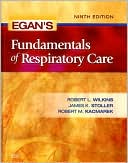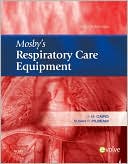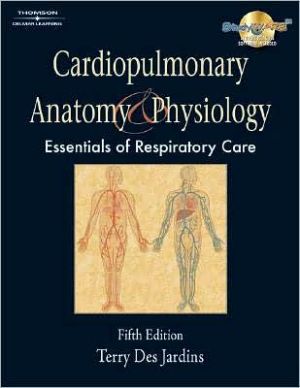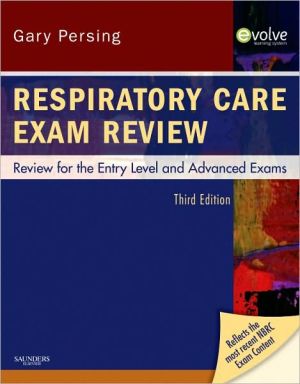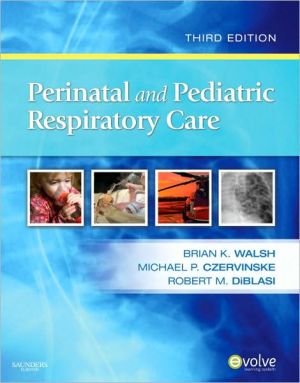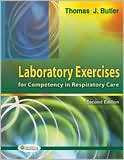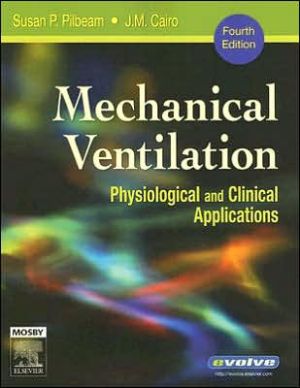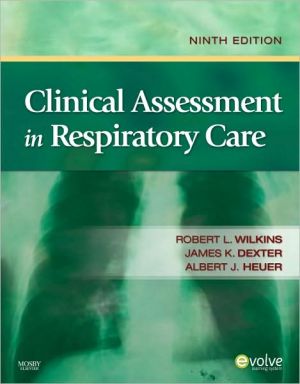Aacn Protocols Of Practice
Care of Mechanically Ventilated Patients guides clinicians’ practice in the following categories: airway management, modes and methods of mechanical ventilation, weaning, sedation and neuromuscular blockade, nutrition support, and home care management of ventilator-assisted patients. Each protocol guides clinicians in the appropriate selection of patients, use and application of management principles, initial and ongoing monitoring, discontinuation of therapies or interventions, and selected...
Search in google:
Care Of Mechanically Ventilated Patients Guides Clinicians’ Practice In The Following Categories: Airway Management, Modes And Methods Of Mechanical Ventilation, Weaning, Sedation And Neuromuscular Blockade, Nutrition Support, And Home Care Management Of Ventilator-Assisted Patients. Each Protocol Guides Clinicians In The Appropriate Selection Of Patients, Use And Application Of Management Principles, Initial And Ongoing Monitoring, Discontinuation Of Therapies Or Interventions, And Selected Aspects Of Quality Control. Doody Review Services Reviewer:David A Thompson, DNSc, MS, RN(Johns Hopkins University School of Medicine)Description:This is a comprehensive manual of care for mechanically ventilated patients, from general airway management, modes of ventilation, and nutritional support to sedation and neuromuscular blockade. The chapters are unique in the way they present case studies with discussion of the case and highlighting further requirements for patient care that should be considered. The book also provides protocols on how to best provide care, and ethical considerations for each chapter with a substantial literature review. The many diagrams and pictures of equipment are helpful in explaining patient care delivery. Purpose:The purpose is to take available evidence in mechanical ventilation and present it in a protocol format in such a way as to translate the evidence into clinical practice for critical care nurses at the bedside. The protocols that outline the latest patient care findings are easy to understand and integrate into clinical practice. The topics in each section are addressed by experts who have developed a concise list of recommendations to be integrated into practice. Evidence-based practice is a hallmark of good clinical practice, especially when limited resources are available for attending national conferences and workshops. This is a wonderful reference.Audience:The book is written primarily for critical care nurses, but because the research is from both medicine and nursing, it could serve as a guide for allied healthcare and medical practitioners as well. The information, presented by the American Association of Critical Care Nurses, could be used by any provider who has to manage airways in inpatient and long-term care settings as well as the ICU. Features:The book's six chapters cover general airway management, invasive and noninvasive methods of mechanical ventilation, weaning from mechanical ventilation, home care with mechanical ventilation, nutritional support, and sedation and neuromuscular blockade. Each chapter is well thought out, starting with a case summary followed by a general discussion of the topic. The airway management section provides a detailed description of the types of airways available, the materials used, and the FDA standard. What is exceptionally well done is the review of the evidence broken down into period of use, recommendations for care (e.g., post intubation care), followed by the rationale for the recommendation with the level of recommendation (scale of the quality of evidence). The scale begins with 1 (manufacturer's recommendation) to a scale of 5 (strongest) which indicates clinical trials in different populations have been completed that support the recommendation. Each chapter is followed by an annotated bibliography with a summary of each article in abstract form for ease of use and for a quick review of the evidence. The book is easy to read, but the word "protocol" is a bit deceiving because these are not set up as traditional protocols that a nurse might find in a hospital policy and procedure manual where things are listed in steps (e.g. step one: a trial of CPAP; step two; assess pulmonary mechanics, etc.). Instead, the information is presented in sections, such as anxiety pain and rest/sleep during a weaning cycle, and then the book moves to the next potential situation a patient may experience. The only thing possibly missing is a specific section on prevention of ventilator associated pneumonia (VAP). VAP has received significant attention in the last few years and there are completed clinical trials that show a reduction in incidence and associated mortality. Assessment:The quality and quantity of the information in this book is very good. The book includes some significant studies that have improved ventilator management and methods to assess readiness for weaning and extubation that should be incorporated into practice. The previous version was in monograph form and is at least five years old, so clearly this update is needed to include the most current research.
Ch. 1Airway management1Ch. 2Invasive and noninvasive modes and methods of mechanical ventilation59Ch. 3Weaning from mechanical ventilation95Ch. 4Beyond the ICU : home care management of patients receiving mechanical ventilation161Ch. 5Nutritional support for mechanically ventilated patients191Ch. 6Sedation and neuromuscular blockade in mechanically ventilated patients253
\ From The CriticsReviewer: David A Thompson, DNSc, MS, RN(Johns Hopkins University School of Medicine)\ Description: "This is a comprehensive manual of care for mechanically ventilated patients, from general airway management, modes of ventilation, and nutritional support to sedation and neuromuscular blockade. The chapters are unique in the way they present case studies with discussion of the case and highlighting further requirements for patient care that should be considered. The book also provides protocols on how to best provide care, and ethical considerations for each chapter with a substantial literature review. The many diagrams and pictures of equipment are helpful in explaining patient care delivery. "\ Purpose: The purpose is to take available evidence in mechanical ventilation and present it in a protocol format in such a way as to translate the evidence into clinical practice for critical care nurses at the bedside. The protocols that outline the latest patient care findings are easy to understand and integrate into clinical practice. The topics in each section are addressed by experts who have developed a concise list of recommendations to be integrated into practice. Evidence-based practice is a hallmark of good clinical practice, especially when limited resources are available for attending national conferences and workshops. This is a wonderful reference.\ Audience: The book is written primarily for critical care nurses, but because the research is from both medicine and nursing, it could serve as a guide for allied healthcare and medical practitioners as well. The information, presented by the American Association of Critical Care Nurses, could be used by any provider who has to manage airways in inpatient and long-term care settings as well as the ICU. \ Features: "The book's six chapters cover general airway management, invasive and noninvasive methods of mechanical ventilation, weaning from mechanical ventilation, home care with mechanical ventilation, nutritional support, and sedation and neuromuscular blockade. Each chapter is well thought out, starting with a case summary followed by a general discussion of the topic. The airway management section provides a detailed description of the types of airways available, the materials used, and the FDA standard. What is exceptionally well done is the review of the evidence broken down into period of use, recommendations for care (e.g., post intubation care), followed by the rationale for the recommendation with the level of recommendation (scale of the quality of evidence). The scale begins with 1 (manufacturer's recommendation) to a scale of 5 (strongest) which indicates clinical trials in different populations have been completed that support the recommendation. Each chapter is followed by an annotated bibliography with a summary of each article in abstract form for ease of use and for a quick review of the evidence. The book is easy to read, but the word "protocol" is a bit deceiving because these are not set up as traditional protocols that a nurse might find in a hospital policy and procedure manual where things are listed in steps (e.g. step one: a trial of CPAP; step two; assess pulmonary mechanics, etc.). Instead, the information is presented in sections, such as anxiety pain and rest/sleep during a weaning cycle, and then the book moves to the next potential situation a patient may experience. The only thing possibly missing is a specific section on prevention of ventilator associated pneumonia (VAP). VAP has received significant attention in the last few years and there are completed clinical trials that show a reduction in incidence and associated mortality. "\ Assessment: The quality and quantity of the information in this book is very good. The book includes some significant studies that have improved ventilator management and methods to assess readiness for weaning and extubation that should be incorporated into practice. The previous version was in monograph form and is at least five years old, so clearly this update is needed to include the most current research.\ \ \ \ \ From The CriticsReviewer: David A Thompson, DNSc, MS, RN(Johns Hopkins University School of Medicine) \ Description: "This is a comprehensive manual of care for mechanically ventilated patients, from general airway management, modes of ventilation, and nutritional support to sedation and neuromuscular blockade. The chapters are unique in the way they present case studies with discussion of the case and highlighting further requirements for patient care that should be considered. The book also provides protocols on how to best provide care, and ethical considerations for each chapter with a substantial literature review. The many diagrams and pictures of equipment are helpful in explaining patient care delivery. \ Purpose: The purpose is to take available evidence in mechanical ventilation and present it in a protocol format in such a way as to translate the evidence into clinical practice for critical care nurses at the bedside. The protocols that outline the latest patient care findings are easy to understand and integrate into clinical practice. The topics in each section are addressed by experts who have developed a concise list of recommendations to be integrated into practice. Evidence-based practice is a hallmark of good clinical practice, especially when limited resources are available for attending national conferences and workshops. This is a wonderful reference.\ Audience: The book is written primarily for critical care nurses, but because the research is from both medicine and nursing, it could serve as a guide for allied healthcare and medical practitioners as well. The information, presented by the American Association of Critical Care Nurses, could be used by any provider who has to manage airways in inpatient and long-term care settings as well as the ICU. \ Features: "The book's six chapters cover general airway management, invasive and noninvasive methods of mechanical ventilation, weaning from mechanical ventilation, home care with mechanical ventilation, nutritional support, and sedation and neuromuscular blockade. Each chapter is well thought out, starting with a case summary followed by a general discussion of the topic. The airway management section provides a detailed description of the types of airways available, the materials used, and the FDA standard. What is exceptionally well done is the review of the evidence broken down into period of use, recommendations for care (e.g., post intubation care), followed by the rationale for the recommendation with the level of recommendation (scale of the quality of evidence). The scale begins with 1 (manufacturer's recommendation) to a scale of 5 (strongest) which indicates clinical trials in different populations have been completed that support the recommendation. Each chapter is followed by an annotated bibliography with a summary of each article in abstract form for ease of use and for a quick review of the evidence. The book is easy to read, but the word "protocol" is a bit deceiving because these are not set up as traditional protocols that a nurse might find in a hospital policy and procedure manual where things are listed in steps (e.g. step one: a trial of CPAP; step two; assess pulmonary mechanics, etc.). Instead, the information is presented in sections, such as anxiety pain and rest/sleep during a weaning cycle, and then the book moves to the next potential situation a patient may experience. The only thing possibly missing is a specific section on prevention of ventilator associated pneumonia (VAP). VAP has received significant attention in the last few years and there are completed clinical trials that show a reduction in incidence and associated mortality. \ Assessment: The quality and quantity of the information in this book is very good. The book includes some significant studies that have improved ventilator management and methods to assess readiness for weaning and extubation that should be incorporated into practice. The previous version was in monograph form and is at least five years old, so clearly this update is needed to include the most current research.\ \

